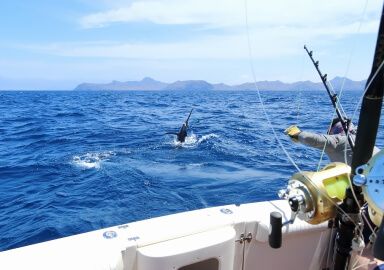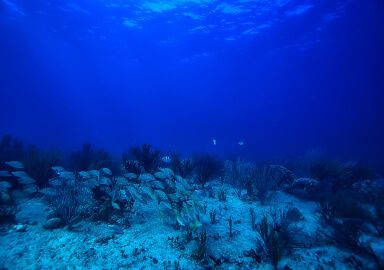Roosterfish
With a dorsal fin resembling a rooster’s comb and beautiful dark, horizontal stripes across its body, the roosterfish is one of the world’s coolest-looking saltwater fish.
View 39 listings
39
listings
–
price starting from
4
countries
–
to the nearest trip
Where and When?
Roosterfish are found in warm coastal waters in the eastern Pacific Ocean, from Baja California to Peru. Their numbers are highest in Central America, especially Costa Rica and Panama, but many roosterfish are caught along Mexico’s Baja Peninsula and in the Sea of Cortez. Other countries that have good numbers of roosterfish include Guatemala, Honduras, Nicaragua, Colombia, Ecuador, and Peru. They can be caught year-round along sandy coastlines, in the surf, outside the mouths of rivers, and near rocky reefs and islands. Most regions report that May through November are the most productive months.
About Roosterfish
Known as pez gallo in Spanish, roosterfish are a popular target for surf fishermen and inshore anglers. Their distinctive appearance, and the fact that they put up an incredible fight when hooked, makes them highly sought-after by recreational fishermen. They are not considered good to eat, so most roosterfish anglers practice catch and release. The average roosterfish caught by anglers is about 20 pounds (9 kg), but they can get much larger. For most anglers, the Holy Grail is a roosterfish larger than 50 pounds (22.7 kg). The world-record roosterfish was a 114-pounder (51.7 kg) caught in La Paz, Mexico.
The spiny dorsal fin that consists of seven long, feathery spines is the most interesting characteristic of this fish. The fin is normally folded back into a groove on the top of the fish’s back, but the fish raises it when chasing baitfish, which helps it to appear larger and herd schools of smaller fish. Roosterfish also have a highly developed sense of hearing because of the unusual placement of their swim bladder, which is located where it contacts the inner ear.
How to Catch?
Roosterfish are aggressive predators that tend to key on schools of baitfish, and by far the most successful way to catch them is by using live bait. Dead baits sometimes work, but live baitfish are far more effective. Blue runners, sardines, bonito, mullet, and mackerel are good choices to entice roosterfish. Slow trolling these baits in near-shore habitats is most productive. Large roosterfish are sometimes caught by surf fishermen; in shallow water, you can often spot their distinctive dorsal fins slicing the surface when they are chasing bait. Roosterfish can also be caught by casting and retrieving lures such as poppers and swim baits, and even by jigging. Work these lures fast and aggressively. When you hook a roosterfish, be prepared for it to take line off your reel in a long, powerful run—and once you finally get it in close to the boat, the fish is likely to take off again.







